Balkinization
an unanticipated consequence of
Jack M. Balkin
Balkinization Symposiums: A Continuing List
E-mail:
Jack Balkin:
jackbalkin at yahoo.com
Bruce Ackerman
bruce.ackerman at yale.edu
Ian Ayres
ian.ayres at yale.edu
Corey Brettschneider
corey_brettschneider at brown.edu
Mary Dudziak
mary.l.dudziak at emory.edu
Joey Fishkin
joey.fishkin at gmail.com
Heather Gerken heather.gerken at yale.edu
Abbe Gluck abbe.gluck at yale.edu
Mark Graber
mgraber at law.umaryland.edu
Stephen Griffin
sgriffin at tulane.edu
Jonathan Hafetz
jonathan.hafetz at shu.edu
Jeremy Kessler
jkessler at law.columbia.edu
Andrew Koppelman
akoppelman at law.northwestern.edu
Marty Lederman
msl46 at law.georgetown.edu
Sanford Levinson
slevinson at law.utexas.edu
David Luban
david.luban at gmail.com
Gerard Magliocca
gmaglioc at iupui.edu
Jason Mazzone
mazzonej at illinois.edu
Linda McClain
lmcclain at bu.edu
John Mikhail
mikhail at law.georgetown.edu
Frank Pasquale
pasquale.frank at gmail.com
Nate Persily
npersily at gmail.com
Michael Stokes Paulsen
michaelstokespaulsen at gmail.com
Deborah Pearlstein
dpearlst at yu.edu
Rick Pildes
rick.pildes at nyu.edu
David Pozen
dpozen at law.columbia.edu
Richard Primus
raprimus at umich.edu
K. Sabeel Rahmansabeel.rahman at brooklaw.edu
Alice Ristroph
alice.ristroph at shu.edu
Neil Siegel
siegel at law.duke.edu
David Super
david.super at law.georgetown.edu
Brian Tamanaha
btamanaha at wulaw.wustl.edu
Nelson Tebbe
nelson.tebbe at brooklaw.edu
Mark Tushnet
mtushnet at law.harvard.edu
Adam Winkler
winkler at ucla.edu
Compendium of posts on Hobby Lobby and related cases
The Anti-Torture Memos: Balkinization Posts on Torture, Interrogation, Detention, War Powers, and OLC
The Anti-Torture Memos (arranged by topic)
Recent Posts
Richard John Neuhaus
Just A Few Blogs
ACS Blog
Alas, a Blog
Althouse
Arts and Letters Daily
Atrios (Eschaton)
Bill of Health
Buzzflash.com
Buzz Machine
Cato at Liberty
Juan Cole (Informed Comment)
Concurring Opinions
The Constitution in 2020
Corrente
Crooked Timber
Daily Howler
Daily Kos
Dana Boyd
Brad DeLong
Digby (Hullabaloo)
Discriminations
Daniel Drezner
Kevin Drum (Mother Jones)
Electrolite
En Banc
Eunomia (Daniel Larison)
Fafblog
Michael Froomkin (Discourse.net)
GovLab (Beth Noveck)
Rick Hasen (Election Law)
History News Network
How Appealing
Ignatz (Sam Heldman)
The Importance of (Ernie Miller)
Infolaw
Instapundit
International Economic Law and Policy Blog
IntLawGrrls
Jacob Levy
Jesus' General
Jurisdynamics
The Kitchen Cabinet
Mark Kleiman
Law Blog Central
Larry Lessig
Lawyers, Guns and Money
Liberal Oasis
Brian Leiter's Law School Reports
The Leiter Reports
Marginal Revolution
Megan McArdle
Memeorandum
Metafilter
Mirror of Justice
The New Republic
Newseum
No More Mister Nice Blog
Brendan Nyhan
Opinio Juris
Orcinus
The Originalism Blog
Pandagon
Passport (Foreign Policy)
Overcoming Bias
Political Animal (Washington Monthly)
Political Theory Daily Review
Political Wire (Taegan Goddard)
The Poor Man
Virginia Postrel
Prawfsblawg
Public Reason
Jonathan Rauch
Raw Story
Redstate
ReligiousLeftLaw.com
Reporters Committee For Freedom of the Press
Reproductive Rights Blog
Rothman's Roadmap to the Right of Publicity
SCOTUS Blog
Seeing the Forest
Clay Shirky
The Shifted Librarian
The Situationist
Larry Solum (Legal Theory)
Andrew Sullivan
Talking Points Memo
Talk Left
Tapped
Tbogg
TechPresident
The Paper Chase (Jurist)
Tom Paine
Tom Tomorrow (This Modern World)
Eve Tushnet
Uggabugga
University of Chicago Law School Faculty Blog
Unqualified Offerings
The Volokh Conspiracy
War and Piece (Laura Rozen)
Wampum
Oliver Willis
Wonkette
Written Description
Matthew Yglesias
Yin
Your Choice of Feeds
1. XML
powered by
2. Atom Feed
3. RSS 2.0
Richard John Neuhaus
Andrew Koppelman
I only saw the Rev. Richard John Neuhaus (who died the day before yesterday) speak once, at a conference at Harvard on abortion in late 1994. I was decidedly out of place at that conference, since I’m a strong defender of abortion rights, but I decided to go (I was living in Cambridge at the time, so it wasn’t much of a trip) and see what I could learn. I kept my mouth shut and behaved myself.
The conference was held in the Ames Courtroom at Harvard Law School, a large, gorgeous room with high ceilings and big windows. (I’ve found some photos of the room here.) I was struck by how out of place the dedicated pro-lifers were in this lush and opulent space; there was a strong sense of being outsiders, besieged in a culture that did not value what they valued. I was particularly struck by the large number of children and babies in the room. Normally, at academic conferences such as this one, a crying baby would be as misplaced as a giraffe, but in fact the panels were able to proceed very well, with the occasional baby noise hardly any distraction from what was said. If a baby started crying loudly, the parent carrying it (not always the mother) would quickly exit the room. It was clear that many of the people there didn’t have childcare and needed to bring their kids along, but I also took the presence of children to be a defiant statement: see, we value young life and accommodate it in our daily doings, as most of the people in our benighted culture emphatically do not. And I thought there was a good point being made, one that was particularly poignant to me at the time because I was the father of a toddler: our culture could be a good deal more accommodating of small children and their parents than it is.
I was also struck, though, by the juxtaposition of this conference with another one that I had attended in the very same room less than a year earlier. That was a conference called “Stonewall at 25,” celebrating the 25th anniversary of the Stonewall uprising that began the modern gay rights movement. That meeting, too, had a political agenda, defending gay rights, less than 10 years after the Supreme Court had declared in Bowers v. Hardwick (1986) that the states had the power to criminalize homosexual sex.
The second time, there was a weird feeling of déjà vu. Each time, I could feel the group’s sense of being a besieged minority, trying to defend values that were misunderstood and despised by the larger world. Each time there was a palpable feeling of relief at for once being in a room of like-minded and sympathetic people. (As I said, I kept quiet at the abortion conference.) I was struck by the thought that both groups were right to feel its minority status, but that each group was mistaken to the extent that each tended to view the other as paradigmatic of the dominant point of view that they were struggling against. Of course, neither is dominant, and both remain marginal.
I came away feeling that both groups were good, decent people, and that we ought to find some way for both to be able to live in the same country. That’s more easily done with respect to gay rights than abortion, since the only way to end the alienation of the pro-lifers is to massively invade the autonomy of other people. But I came away with a sense of tragedy about my conflict with them.
Father Neuhaus gave the closing address at the abortion conference. I remember being struck by his eloquence, even though I disagreed with nearly everything he said. His view of the world wasn’t mine; his views on abortion and homosexuality struck me as bizarre, but he did as good a job as anyone has of making me understand what those issues look like from that political perspective. I particularly remember being struck by how he addressed the palpable sense of frustration in the room. I’m pretty sure that these are nearly his exact concluding words: “We should not mourn, rather we should be glad that we are not God. We should be glad that God is God.” In front of an audience that was inured to political defeat – the 20th anniversary of Roe v. Wade had just passed – he aimed to forestall despair, and I thought that this was a lovely way of putting his point, one that connected even with an agnostic like me. I was glad that he was there, and I’m sorry he’s gone now. Writing from the other side of the cultural divide, I am grateful for adversaries who are thoughtful and articulate, and I’ll miss him.
Posted
5:06 PM
by Andrew Koppelman [link]
I agree that he was thoughtful and articulate. More than articulate: gifted in articulating, communicating, explicating. He did not in my judgment always use his gifts in undivided pursuit of the truth, but he came closer than any who might be comparable.
One unfortunate fact is his and related views and scholarship were hijacked by Dubya to pretend that his politics had the moral high road. This is not Neuhaus's fault but I would that he'd rejected such an unworthy, ignorant, fool of a champion of his values. It's too late for that now.
But I close with enormous respect for Neuhaus, and thanks for his tireless work as an exponent of them in wonderful, powerful, lucid prose.
Requiem æternam dona eis, Domine, et lux perpetua . . .
You can dress up ignorant intolerance in beautiful, florid Catholic natural law language, but it is still ignorant intolerance. Neuhaus is lucky that his religious beliefs were false-- for God were truly of the nature that he believed, such a deity would surely send this man to hell for attempting to ruin the lives of so many of his fellow human beings.
Dilan, are you qualified to debate theology with Neuhaus? Maybe Neuhaus' bigotry and hate were justified by his made-up supernatural power, in which case the latter might send him to heaven.
But it sounds like you don't spend much time speaking with people who have a different conception of moral virtue, so it's hard to fault you for your intolerance.
I don't claim to know the nature of God. But I do know that whatever She is, She has nothing whatever to do with the rituals of organized religions which have evolved over centuries and have been shaped by the political needs and desires of church leaders and their flocks. We don't know what's really true (and can't know, because despite what people say, it is pretty clear that God doesn't intervene directly in human affairs), but it's pretty clear that a lot of things are false.
Bill:
When the Southern Baptists endorsed discrimination against blacks and slavery, would you have claimed that anyone who criticized their beliefs was intolerant?
I am perfectly tolerant of Catholicism, including the tiny minority of Catholics who endorse Neuhaus' positions. I would never want to use the law to prevent Neuhaus or any other right wing Catholic from practicing his or her faith, no matter how bigoted I think it is.
But in contrast, Neuhaus wanted to use the guns of the state to force gays and lesbians and women and doctors into jail because they didn't happen to conduct their lives in accordance with Nuehaus' prejudices.
And they are prejudices. This isn't simply a disagreement about "moral virtue". It's perfectly clear that there is nothing "unvirtuous" about putting a penis inside a man instead of a woman. It's perfectly clear that using a condom to prevent the spread of HIV IS virtuous. Nuehaus, for some reason, had a deep seated, perverted prejudice against gays and liberated women.
He, of course, had a First Amendment right to that prejudice, and I strongly believe that it should be tolerated. But tolerance isn't the same thing as either immunity from criticism or the right to throw people into prison for offending you.
This was an evil man, who believed in evil things, and he should not be mourned.
Citation, please? Let's start with forcing gays into jail.
That's the only consistent approach.
As someone not thrilled by abortion but determined that it should be legal, I think that such candor would benefit the pro-choice movement, because however many Americans are uncomfortable about abortion, they don't want their daughters executed for getting abortions.
It's the "reasonable" pro-lifers who are the more dangerous, because they have the same goals as Neuhaus, but mask them.
How about this one?
http://www.outsports.com/forums/index.php?showtopic=12726
That's right, Richard John Neuhaus, proud supporter of Bowers v. Hardwick.
Dilan, your reference to a "made-up supernatural power" leads me to infer that you are an atheist, and, as I am too, I hate to quibble with you. But, as atheists, we lack standing to opine on God's sex, on whether he, she, or it has anything to do with rituals of organized religion, and on whether God intervenes directly in human affairs. The people who fantasize that there is a supernatural power have every right also to fantasize that God mandates or endorses their rituals and intervenes in their affairs. We may join the conversation only if they claim empirical evidence for their beliefs, but they generally don't.
As for Neuhaus' fantasies, he does indeed have every right to fantasize that God in fact has a penis and mandates male heterosexual dominance.
My problems are twofold: (1) when he stops trying to persuade people and starts trying to use laws to enact his theology, things are a lot different, and (2) bigots are still bigots (indeed, they are worse bigots, because they aren't just claiming their own authority) when they cloak their claims with religion, and religious bigots don't get a free pass from any criticism.
Still, the fact that a "bizarre" sentiment is somehow done in a "eloquent" way shouldn't impress too much. Bigots don't just rant and rave. Blandness of evil, and all that. Eloquence in the service of bigotry in fact can be particularly dangerous.
I fear stereotypes about the other side might have led RN to be given too much credit, even after one speech.
I do wonder about the "we should be glad that we are not God" bit. It seems that side wants to do just that. Their God tells them so, so even if the God of others disagree, it is not enough.
They are not God, but act as God's conduits, a distinction that at times not much of a difference. In fact, seems like they are the ones guilty of blasphemy at times.
1: The person who affirmatively asserts the non-existence of God. Since one cannot prove the non-existence of anything, this assertion requires a leap of faith.
2. The person who will not make a leap of faith, but, because there is no empirical evidence for the existence of God, does not believe in God. This person acknowledges that God (or unicorns or Santa Claus) may exist, but does not take the possibility seriously.
3. The person who does not believe in God but considers the existence of God to be a serious possibility (although he probably does not consider the existence of unicorns or Santa Claus to be a serious possibility).
I consider person #2 to be an atheist (and I am an example of person # 2). Some people, however, consider person # 2 to be an agnostic. I think it unfortunate that English does not contain three words to cover the above three categories.
When we speak of "God," we generally mean a certain entity. We aren't talking Zeus. This alone is problematic, since Dilan makes assumptions about rituals and such and who knows, e.g., "God" or a panel of gods DO exist, are flawed individuals or whatever, and therefore DO support flawed things. In fact, if one reads the Bible, it seems that "God" there does just that.
Anyway, talking about the commonly accepted definition of "God," we might be able to logically argue that such a "God" does not exist. One can point to the problem of evil, the "explanations" under a God simply not impressive, or other things.
"affirmatively asserts the non-existence of God" ... I don't think I take a "leap of faith" when I affirmatively assert there is no Santa Claus as usually understood. A man who delivers presents to everyone on Christmas and the like. Or, when I say that the earth is not the center of the universe. Unicorns are different, since it is a more limited matter.
Definition #1 is best used with a wide definition of "God," where it might work. Still, we would use the word "faith" in a pretty broad way. I would not be able to affirmatively assert that I am not married to Angelina Jolie without a 'leap of faith.'
Since words like "God" or "religion" often are wrongly defined narrowly and with some laziness, I do appreciate Henry's attempt to clarify the term. It is also arguably somewhat on topic when the subject is the death of a religious figure.
I'm sorry, Dilan; where's the part where Neuhaus supports the state jailing gays?
Indeed, where in your cited item does Neuhaus call for jailing anyone? The above is his entire quote in the item.
If Neuhaus really called for the state to jail gays, that's news to me. Please cite your sources.
He opposed Lawrence v. Texas. The ruling overturned a law that criminalized, with prison terms etc., gays having sex with each other. He "supported" local option to do this. I wouldn't be surprised if he also directly supported such laws as necessary for public morality.
As to the doctor comment, I assume some research would show he thinks abortion should be illegal, which would involve putting doctors in jail who perform them. In fact, Wikipedia notes he was "liberal" until Roe.
Though "Roe" was a pregnant women, abortion cases often involved doctors criminally liable for breaching laws RNS wanted on the books.
He sure does. Which is not what you claimed.
Can you back up your claim? If not, will you have the decency to retract it, apologize, and stop misrepresenting Neuhaus?
Sure it is. I don't buy the distinction between opposing Lawrence and supporting sodomy laws unless a person goes on record and quite forcefully opposing discrimination against gays.
The reason is because of the reality that a lot of people on the right support a heck of a lot of gay bashing, and have simply learned to emphasize in their public statements the legalistic issues such as whether the Due Process Clause prohibits sodomy laws.
Bigotry against gays is repellent. If someone isn't condemning it, and is endorsing a legal position that would enshrine it into the law, I think it's fair to conclude that the person is a bigot.
Although my views happen to be far from his, I like his clarity, nuance, humor, scholarship, and quality of writing. Let's face it, the boy can write. If you want to differ with him, there's plenty to differ with in what he did say; there's no reason to differ with what he didn't.
Dilan said that RN supported arresting gays and doctors who performed abortion. He supported laws that did just that. Said laws were enforced with police with guns.
The fact they were selectively enforced (my link has him saying he dislikes arbitrary laws, but said laws were by practice just that, even in Texas), which was if anything worse. Especially when they were enforced with violence or selectively against people local cops didn't like. What more "evidence" do you want?
As to him writing well and being charming/humorous, that's nice and all, but bigots can write well, be charming etc. They also can, in some fashion at least, be "nuanced."
One of the things about "Dubya" that really rankled was when he supported amending the Constitution in the promotion of anti-gay bigotry. I felt it was like spitting on the document.
Many like him too, including those who disagree quite strongly with his views. Oh well.
And putting them in jail. Yes.
Neuhaus supported laws that did just that.
Sorry, despite repeated requests, no one has produced evidence that supports this assertion.
my link has him saying he dislikes arbitrary laws, but said laws were by practice just that, even in Texas
If you mean this link that's not what he said. In fact, he provides two arguments against anti-sodomy laws: (1) "not everything immoral can or should be made illegal", and (2) in his judgement, in some cases "attempts to pass or enforce such a law would cause severe damage to the common good." He also adds a nuanced argument: for Texas, it is up to the people of Texas to decide, not him.
The context is also useful: a reader of his journal First Things is asking, yes or no, does he support anti-sodomy laws? If he took the position repeatedly attributed to him here, his answer would be yes, and that would be a citation supporting assertions such as the above. He does not say yes. He goes a long way toward saying no. We may guess he disappointed his reader and his supporters, and I'm sure he knew that. But it was his principled and rational position, expressed clearly and well, that even if you did oppose sodomy there are times where you should forbear to criminalize it or even attempt to do so.
That's what he wrote.
It would in my opinion perhaps be helpful to critics of Neuhaus if they read what he wrote.
I've stated it before, I'll say it one more time, and then I'll let it rest: my views are far from Neuhaus's. But I will listen with much patience to what he has to say. I am out of patience for those who put words in his mouth. If you want to criticize him, fine -- I'll probably join you in most criticisms -- but criticize him, not some straw man you pretend is him.
Unlike these things, for which I assume RN didn't think Texas should have an option making illegal (might be wrong), he "supported" Texas making certain acts of homosexuals having sex illegal.
As I said, in Texas, the enforcement was arbitrary, even though he said he opposed arbitrarily applied laws. [I noted that he takes this position, so yes, I'm aware of it.] But, this is how sodomy laws were applied. History bears this out quite clearly. He still "supports" such local option.
He opposed a Supreme Court ruling that would block this path. He supported the state having the power to have police with guns arrest homosexuals having sex.
Furthermore, as Dilan notes, the result of his stance IS the arresting of gays. No matter how much "nuanced" we use to ignore cause/effect.
Likewise, are you saying that he didn't want abortion illegal? This includes, as Dilan noted, arresting the people who perform them. This is what illegal means.
No, he doesn't.
Here's how you say "no". You say the following words, or something like them:
"I think people who want to throw homosexuals in jail are sick bigots. I think laws that authorize the government to do so are awful and unjust, and I oppose them with every fibre of my being. Homosexuality may be a sin, but gays and lesbians are equal citizens under the law and we have no business trying to use government power to make their lives miserable or force them to change." And then, if you want to defend the constitutionality of sodomy laws, I will accept that you aren't a bigot.
That's not Neuhaus. And there's a reason for that. It gets back to an old saying of the civil rights movement that he was once a part of. "If you aren't part of the solution, you are part of the problem."
Neuhaus was part of the problem. And he was part of the problem because he hated gays. (He hated liberated women as well, but that's another story.) And he trafficked with people who hated gays. He made political alliances with people who hated gays. He was never going to offend them by condemning homophobia.
If we are ever going to stop gay bashing in this country and enshrine equality without regard to sexual orientation, we have to make what Neuhaus stood for just as unacceptable as the ideas of those who defended racism and Jim Crow the South on legalistic grounds while refusing to condemn the bigotry of White Southerners.
That's what Neuhaus was. He was a man who hated gays and lesbians. Saying it in a beautiful, florid fashion, with copious references to the great tradition of Catholic intellectuals, doesn't purify the garbage that he believed in. And defending Texas' right to have sodomy statutes on the books, in the end, is defending any state's right to discriminate against gays and ruin their lives. All because Mr. Neuhaus believed in a fairy tale.
No, sorry, this man was a horrible man. And his ideas will one day be just as discredited as the views of the racists he once fought against.
Tell me -- are critics of abortion "evil"? Are proponents of abortion rights "evil"?
How is "evil" a meaningful term without reference to God?
Was Charles Manson "evil," or was he simply making lifestyle choices that happen to be different from the ones you and I make? If Osama bin Laden gets his hands on a million nukes and destroys the planet, is that "evil," or is that just his way of fulfilling Allah's will as he sees it?
But to be clear, yes, I think discrimination against gays and lesbians is evil. And I think that opposing condom usage when the result is millions of Africans dying of AIDS is an even greater evil.
Abortion, unlike bigotry against gays and lesbians, is a debatable issue. Bigots against gays and lesbians are evil in the same way that bigots against blacks were and are.
Finally, and most importantly, your question about how can evil work without God shows a smugness that is inherent in a lot of religious conservatives, as if religious fairy tales written by people who were too ignorant to know any better and simply wanted to control ancient populations define what is good and evil. No, human reason defines good and evil. Indeed, even the Catholic Church agrees with me on this one (subject to the theological belief that our intellects are inspired by divine law), a position that dates back to Aquinas.
That is a tangent though. The point is that gay bashing is immoral, evil, unacceptable, to be shunned shamed and condemned, and its practitioners need to be driven out of polite society and civilized discourse. Just as racists are. And that's why we must not mourn Richard John Neuhaus.
Tell you what, you can not mourn the not Neuhaus. It might be more appropriate to do so in a thread devoted to the recent death of not Neuhaus.
There are gays and lesbians in this country who get fired from their jobs, get kicked out of the military, can't get married, can't adopt children, and can't bring their partners into this country.
And the real Neuhaus-- not some guy I made up-- dressed up that bigotry in florid, intellectual language and helped make it respectable.
Yes, yes, yes, yes, and yes. Indeed, I can verify some of these from firsthand knowledge.
And the real Neuhaus -- not some guy I made up -- dressed up that bigotry in florid, intellectual language and helped make it respectable.
That's a view that might be supportable.
Unlike your earlier claim.
May I suggest your criticisms of the man would be more interesting if they're supportable? If they're based on fact? If they don't describe some straw man?
Neuhaus is dead. Perhaps it's time to let the straw man die too.
However it was initiated—all the lawyerly vetting that went on, and all the jabber about military necessity and keeping America safe—Khalid’s torture ended up being nothing more than torture, and only that. Somewhere well before the one-hundred eighty-third trip to the waterboard, torture was no longer merely an unproductive means of coaxing information from a suspect. It became an impersonal bureaucratized process that swiped his individuality. It was a form of mental murder.The entire item is worth reading, and thoroughly. It makes the case that under any circumstances whatsoever, torture is wrong.
Where Condi recently went on and on about doing the "right thing" and you can't understand what that decision was unless you were there, the First Things item cuts through that nonsense. Torture is wrong, here's why, and your exceptions are "detached from necessity and morality, to say nothing of reality".
Shrub liked to take moral authority and crib language from Neuhaus and his school. But we can readily see he had a highly selective reading. As Tim points out, PGN's commitment to the dignity of the individual does not admit of selective interpretation, however convenient that might have been for those in power.
Books by Balkinization Bloggers

Gerard N. Magliocca, The Actual Art of Governing: Justice Robert H. Jackson's Concurring Opinion in the Steel Seizure Case (Oxford University Press, 2025)

Linda C. McClain and Aziza Ahmed, The Routledge Companion to Gender and COVID-19 (Routledge, 2024)

David Pozen, The Constitution of the War on Drugs (Oxford University Press, 2024)

Jack M. Balkin, Memory and Authority: The Uses of History in Constitutional Interpretation (Yale University Press, 2024)
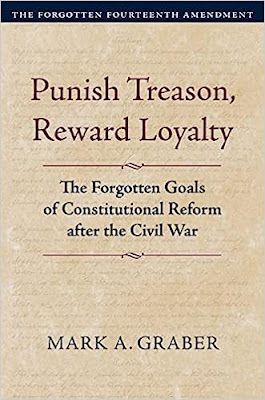
Mark A. Graber, Punish Treason, Reward Loyalty: The Forgotten Goals of Constitutional Reform after the Civil War (University of Kansas Press, 2023)
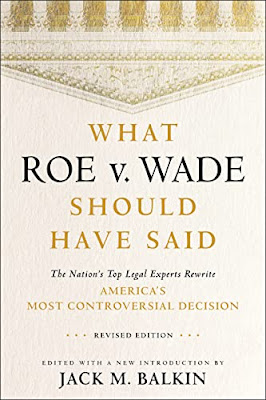
Jack M. Balkin, What Roe v. Wade Should Have Said: The Nation's Top Legal Experts Rewrite America's Most Controversial Decision - Revised Edition (NYU Press, 2023)

Andrew Koppelman, Burning Down the House: How Libertarian Philosophy Was Corrupted by Delusion and Greed (St. Martin’s Press, 2022)

Gerard N. Magliocca, Washington's Heir: The Life of Justice Bushrod Washington (Oxford University Press, 2022)

Joseph Fishkin and William E. Forbath, The Anti-Oligarchy Constitution: Reconstructing the Economic Foundations of American Democracy (Harvard University Press, 2022)
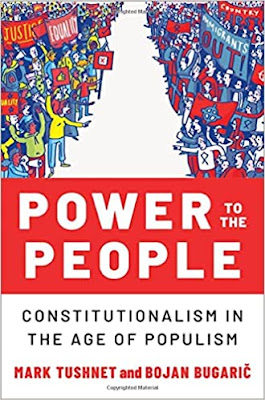
Mark Tushnet and Bojan Bugaric, Power to the People: Constitutionalism in the Age of Populism (Oxford University Press 2021).

Mark Philip Bradley and Mary L. Dudziak, eds., Making the Forever War: Marilyn B. Young on the Culture and Politics of American Militarism Culture and Politics in the Cold War and Beyond (University of Massachusetts Press, 2021).

Jack M. Balkin, What Obergefell v. Hodges Should Have Said: The Nation's Top Legal Experts Rewrite America's Same-Sex Marriage Decision (Yale University Press, 2020)

Frank Pasquale, New Laws of Robotics: Defending Human Expertise in the Age of AI (Belknap Press, 2020)

Jack M. Balkin, The Cycles of Constitutional Time (Oxford University Press, 2020)

Mark Tushnet, Taking Back the Constitution: Activist Judges and the Next Age of American Law (Yale University Press 2020).

Andrew Koppelman, Gay Rights vs. Religious Liberty?: The Unnecessary Conflict (Oxford University Press, 2020)

Ezekiel J Emanuel and Abbe R. Gluck, The Trillion Dollar Revolution: How the Affordable Care Act Transformed Politics, Law, and Health Care in America (PublicAffairs, 2020)

Linda C. McClain, Who's the Bigot?: Learning from Conflicts over Marriage and Civil Rights Law (Oxford University Press, 2020)
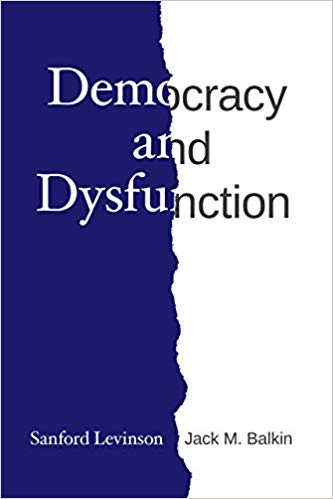
Sanford Levinson and Jack M. Balkin, Democracy and Dysfunction (University of Chicago Press, 2019)

Sanford Levinson, Written in Stone: Public Monuments in Changing Societies (Duke University Press 2018)

Mark A. Graber, Sanford Levinson, and Mark Tushnet, eds., Constitutional Democracy in Crisis? (Oxford University Press 2018)

Gerard Magliocca, The Heart of the Constitution: How the Bill of Rights became the Bill of Rights (Oxford University Press, 2018)

Cynthia Levinson and Sanford Levinson, Fault Lines in the Constitution: The Framers, Their Fights, and the Flaws that Affect Us Today (Peachtree Publishers, 2017)

Brian Z. Tamanaha, A Realistic Theory of Law (Cambridge University Press 2017)

Sanford Levinson, Nullification and Secession in Modern Constitutional Thought (University Press of Kansas 2016)

Sanford Levinson, An Argument Open to All: Reading The Federalist in the 21st Century (Yale University Press 2015)

Stephen M. Griffin, Broken Trust: Dysfunctional Government and Constitutional Reform (University Press of Kansas, 2015)

Frank Pasquale, The Black Box Society: The Secret Algorithms That Control Money and Information (Harvard University Press, 2015)

Bruce Ackerman, We the People, Volume 3: The Civil Rights Revolution (Harvard University Press, 2014)
Balkinization Symposium on We the People, Volume 3: The Civil Rights Revolution

Joseph Fishkin, Bottlenecks: A New Theory of Equal Opportunity (Oxford University Press, 2014)

Mark A. Graber, A New Introduction to American Constitutionalism (Oxford University Press, 2013)

John Mikhail, Elements of Moral Cognition: Rawls' Linguistic Analogy and the Cognitive Science of Moral and Legal Judgment (Cambridge University Press, 2013)

Gerard N. Magliocca, American Founding Son: John Bingham and the Invention of the Fourteenth Amendment (New York University Press, 2013)

Stephen M. Griffin, Long Wars and the Constitution (Harvard University Press, 2013)

Andrew Koppelman, The Tough Luck Constitution and the Assault on Health Care Reform (Oxford University Press, 2013)

James E. Fleming and Linda C. McClain, Ordered Liberty: Rights, Responsibilities, and Virtues (Harvard University Press, 2013)
Balkinization Symposium on Ordered Liberty: Rights, Responsibilities, and Virtues

Andrew Koppelman, Defending American Religious Neutrality (Harvard University Press, 2013)

Brian Z. Tamanaha, Failing Law Schools (University of Chicago Press, 2012)

Sanford Levinson, Framed: America's 51 Constitutions and the Crisis of Governance (Oxford University Press, 2012)

Linda C. McClain and Joanna L. Grossman, Gender Equality: Dimensions of Women's Equal Citizenship (Cambridge University Press, 2012)

Mary Dudziak, War Time: An Idea, Its History, Its Consequences (Oxford University Press, 2012)

Jack M. Balkin, Living Originalism (Harvard University Press, 2011)

Jason Mazzone, Copyfraud and Other Abuses of Intellectual Property Law (Stanford University Press, 2011)

Richard W. Garnett and Andrew Koppelman, First Amendment Stories, (Foundation Press 2011)

Jack M. Balkin, Constitutional Redemption: Political Faith in an Unjust World (Harvard University Press, 2011)

Gerard Magliocca, The Tragedy of William Jennings Bryan: Constitutional Law and the Politics of Backlash (Yale University Press, 2011)

Bernard Harcourt, The Illusion of Free Markets: Punishment and the Myth of Natural Order (Harvard University Press, 2010)

Bruce Ackerman, The Decline and Fall of the American Republic (Harvard University Press, 2010)
Balkinization Symposium on The Decline and Fall of the American Republic

Ian Ayres. Carrots and Sticks: Unlock the Power of Incentives to Get Things Done (Bantam Books, 2010)

Mark Tushnet, Why the Constitution Matters (Yale University Press 2010)
Ian Ayres and Barry Nalebuff: Lifecycle Investing: A New, Safe, and Audacious Way to Improve the Performance of Your Retirement Portfolio (Basic Books, 2010)
.jpg)
Jack M. Balkin, The Laws of Change: I Ching and the Philosophy of Life (2d Edition, Sybil Creek Press 2009)

Brian Z. Tamanaha, Beyond the Formalist-Realist Divide: The Role of Politics in Judging (Princeton University Press 2009)
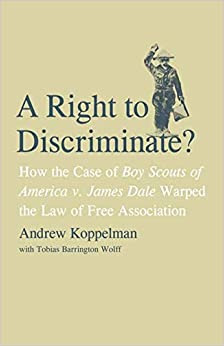
Andrew Koppelman and Tobias Barrington Wolff, A Right to Discriminate?: How the Case of Boy Scouts of America v. James Dale Warped the Law of Free Association (Yale University Press 2009)

Jack M. Balkin and Reva B. Siegel, The Constitution in 2020 (Oxford University Press 2009)
Heather K. Gerken, The Democracy Index: Why Our Election System Is Failing and How to Fix It (Princeton University Press 2009)

Mary Dudziak, Exporting American Dreams: Thurgood Marshall's African Journey (Oxford University Press 2008)

David Luban, Legal Ethics and Human Dignity (Cambridge Univ. Press 2007)

Ian Ayres, Super Crunchers: Why Thinking-By-Numbers is the New Way to be Smart (Bantam 2007)

Jack M. Balkin, James Grimmelmann, Eddan Katz, Nimrod Kozlovski, Shlomit Wagman and Tal Zarsky, eds., Cybercrime: Digital Cops in a Networked Environment (N.Y.U. Press 2007)

Jack M. Balkin and Beth Simone Noveck, The State of Play: Law, Games, and Virtual Worlds (N.Y.U. Press 2006)

Andrew Koppelman, Same Sex, Different States: When Same-Sex Marriages Cross State Lines (Yale University Press 2006)
Brian Tamanaha, Law as a Means to an End (Cambridge University Press 2006)
Sanford Levinson, Our Undemocratic Constitution (Oxford University Press 2006)
Mark Graber, Dred Scott and the Problem of Constitutional Evil (Cambridge University Press 2006)
Jack M. Balkin, ed., What Roe v. Wade Should Have Said (N.Y.U. Press 2005)
Sanford Levinson, ed., Torture: A Collection (Oxford University Press 2004)
Balkin.com homepage
Bibliography
Conlaw.net
Cultural Software
Writings
Opeds
The Information Society Project
BrownvBoard.com
Useful Links
Syllabi and Exams
